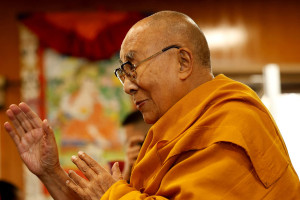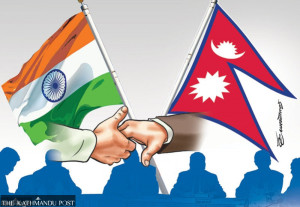Columns
Moral rhetoric, transactional reality
India can lead the global south, but it must first reconcile its moral vocabulary with strategic choices.
Sanitya Kalika
When the Taliban’s Foreign Minister Amir Khan Muttaqi touched down in Delhi last month, irony landed on the runway before his plane did, as a country that once backed Afghanistan’s democratic republic courted the regime that buried it. Not too long ago, India’s Prime Minister Narendra Modi had declared that there is no “good Taliban, bad Taliban”. Yet, a few years later, his government proudly hosted the Taliban’s chief diplomat. Commentators call this a “pragmatic shift”—without realising that ‘pragmatic shift’ is a euphemism used by Delhi’s strategic class when principles become inconvenient. In India, when interests align, a red line swiftly becomes a red carpet.
India’s engagement with the Taliban is part of a broader pattern where moral language sometimes masks more transactional calculations. This pattern is older than Modi. India’s self-portrayal as a moral power has often been shaped by selective narratives, such as leading the Non-Aligned Movement while forming a strategic partnership with Moscow in 1971. The same year, while continuing to invoke the sanctity of sovereignty to condemn interventions elsewhere, India justified its own entry into East Pakistan (now, Bangladesh) on humanitarian grounds as it served a strategic purpose. Even today, as India condemns Pakistan for state sponsorship of terrorism, it rarely acknowledges its own training of the Mukti Bahini and the Tamil Tigers—or its covert and opportunistic engagements with Nepal’s erstwhile Maoist rebels (and allegedly, even training them).
India’s nuclear story tells the same tale. India decried proliferation yet staged its own euphemistically “peaceful” explosion in 1974, refused joining the non-proliferation treaty (NPT), tested again in 1998—all while lecturing others on restraint, ignoring allies’ stockpiles, and defending its own arsenal as “credible minimum deterrence”.
This doctrinal elasticity can be traced to the beginnings of modern India. When it gained independence in 1947, it consisted only of the provinces of British India, not the five hundred-odd princely states—whose hereditary rulers retained internal autonomy in addition to their royal titles. The princely states had two choices: First, join either of the two newly independent dominions (India and Pakistan), and second, remain independent. While most of these rulers chose—some by choice and some by coercion (for example, Hyderabad, whose annexation by India also involved help from the Nepal army)—to join either of these two dominions, some of them chose to remain independent. Among these, the cases of Junagadh and Kashmir are particularly ironic.
Junagadh had a Hindu-majority population but a Muslim monarch—Nawab Muhammad Mahabat Khanji III—who legally acceded to Pakistan. India rejected the legal accession and forcefully annexed Junagadh—in defiance of the UN’s principles—citing people’s will over monarch’s. Kashmir, on the other hand, had a Muslim-majority population but a Hindu monarch—Maharaja Hari Singh—who, after having been cornered by India after Pakistan’s unlawful attack, acceded to India despite their Muslim-majority population. Unlike in Junagadh, India invoked the opposite principle in Kashmir, and Hari Singh’s legal accession trumped potential popular will. India (or Pakistan, which since 2019 has laid an irredentist claim in Junagadh after having acquiesced in it for decades, for that matter) can’t possibly be right in both cases.
The same elasticity extends to India’s great-power dealings. After provoking years of anti-China sentiments following China’s aggression in Galwan, Modi suddenly changed his tone the moment US tariffs began threatening Indian exports. India’s compliant television anchors scrambled to spin the U-turn, and a public long conditioned by state-aligned media swallowed—albeit in perplexity—the new line that China was no longer the enemy it once seemed.
Similarly, when Russia invaded Ukraine, India abstained over 10 times at the UN, purchased discounted Russian oil, yet moralised about “strategic autonomy”—while transforming silence into strategy. This is complemented by India’s inconsistent abstentions on UN resolutions concerning Gaza. Similarly, India conveniently joins the ‘Quad’ to balance China while hedging via the Shanghai Cooperation Organisation. Regionally, its moral consistency fares no better, as it routinely criticises Pakistan’s human rights record while lauding Sheikh Hasina’s erstwhile one-party authoritarianism in Bangladesh. Delhi conveniently hides these strategic, unprincipled acts of hedging behind yet another foreign policy jargon—“multi-alignment”.
Even India’s devotion to multilateralism is conditional. It champions the G20 as proof of its global stewardship but keeps SAARC paralysed for a decade, citing terrorism concerns from Pakistan. By rolling out a red carpet for Muttaqi, India has shredded its maxim that “terror and talks cannot go together”—nonetheless, SAARC—a plurilateral organisation which shouldn’t be affected by individual states’ rivalries—continues to be kept in limbo.
India’s neighbourhood policy also shows the complexity of balancing interests with ideals. In 2014, Modi promised Nepal non-interference and a ‘neighbourhood-first’ policy, but the subsequent blockade in 2015—depriving the earthquake-ravaged Nepalis of fuel and medicine—highlighted the tension between strategic goals and humanitarian concerns. Modi visited Nepal thrice after the blockade, and resumed the language of brotherhood and neighbourhood-first once Nepal’s unstable politics capitulated. Be it in the Himalayas or the Hindu Kush, India’s friendship is conditional on strategic interests.
Its human rights diplomacy follows a similar pattern. In Geneva and New York, Indian delegates eloquently condemn—and rightly so—Pakistan’s persecution of Hindus and Sikhs. But when the OIC, the EU, or the UN questions Delhi about its own treatment of Muslims, Christians, or Dalits, India often responds by deflecting or deferring the issue to another country’s actions, an approach that can detract from a constructive dialogue on human rights. Pakistan’s mistreatment of minorities or Nepal’s constitutional politics are as globally significant as India’s own. However, India calls its abuses an “internal matter”—another jargon it uses to silence those questioning its own human rights record. For India, the universality of human rights starts (or stops) at the Wagah border!
Sure, this moral compartmentalisation is not unique to Modi, but it has perfected under him. Each reversal—from Junagadh to Kashmir, from non-alignment to Soviet-alignment, from moral posturing to oil deals with Moscow—has hardened into habit. Indian diplomats are accustomed to rationalising such reversals with whatabouteries, and hide strategic opportunism in diplomatic patters like pragmatism and realpolitik. Realism without principle, however, is simply strategic opportunism.
India’s security concerns along its borders, shores and in the high seas are real, as might its aspirations for a greater say in global affairs be. However, India often forgets that credibility is the currency of influence. When a state moralises selectively—championing democracy in one capital, ignoring repression in another—it loses the authority to speak for anyone but itself. Even allies notice the dissonance. If India wishes to lead the Global South, it must first stop mimicking the Machiavellian reflexes of the North.
This pattern of convenience, however, is not destiny. A principled realism remains possible. Engagement with regimes like the Taliban or the Burmese junta need not mean endorsement if tied to tangible benchmarks like women’s education, humanitarian access and inclusive governance—in contrast to concessions like allowing the Taliban to restrict the entry of women journalists into Muttaqi’s first press conference in the Indian capital. India can revive genuine regional cooperation instead of monopolising it, closer to what Germany does in the EU.
But to do that, India must stop mistaking ‘human rights championing’ for hegemony (both at home and abroad), multilateralism for selective choreography and non-alignment for strategic indecisiveness. India’s foreign policy often prioritises transactional-ism, veiled in moral rhetoric. India has the capacity to credibly lead the global south, but it must reconcile its moral vocabulary with its strategic choices.




 14.12°C Kathmandu
14.12°C Kathmandu















